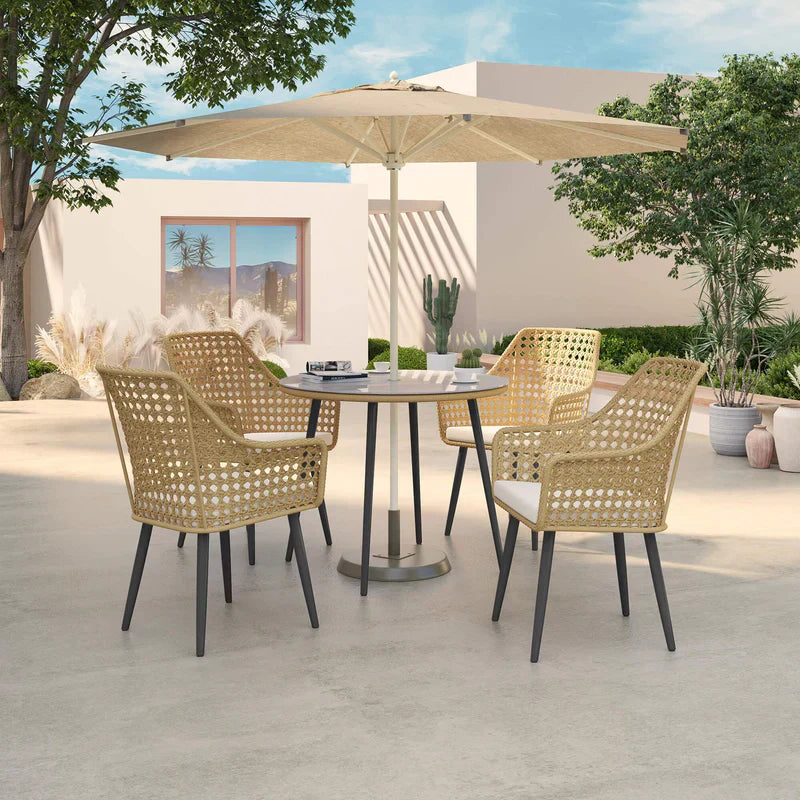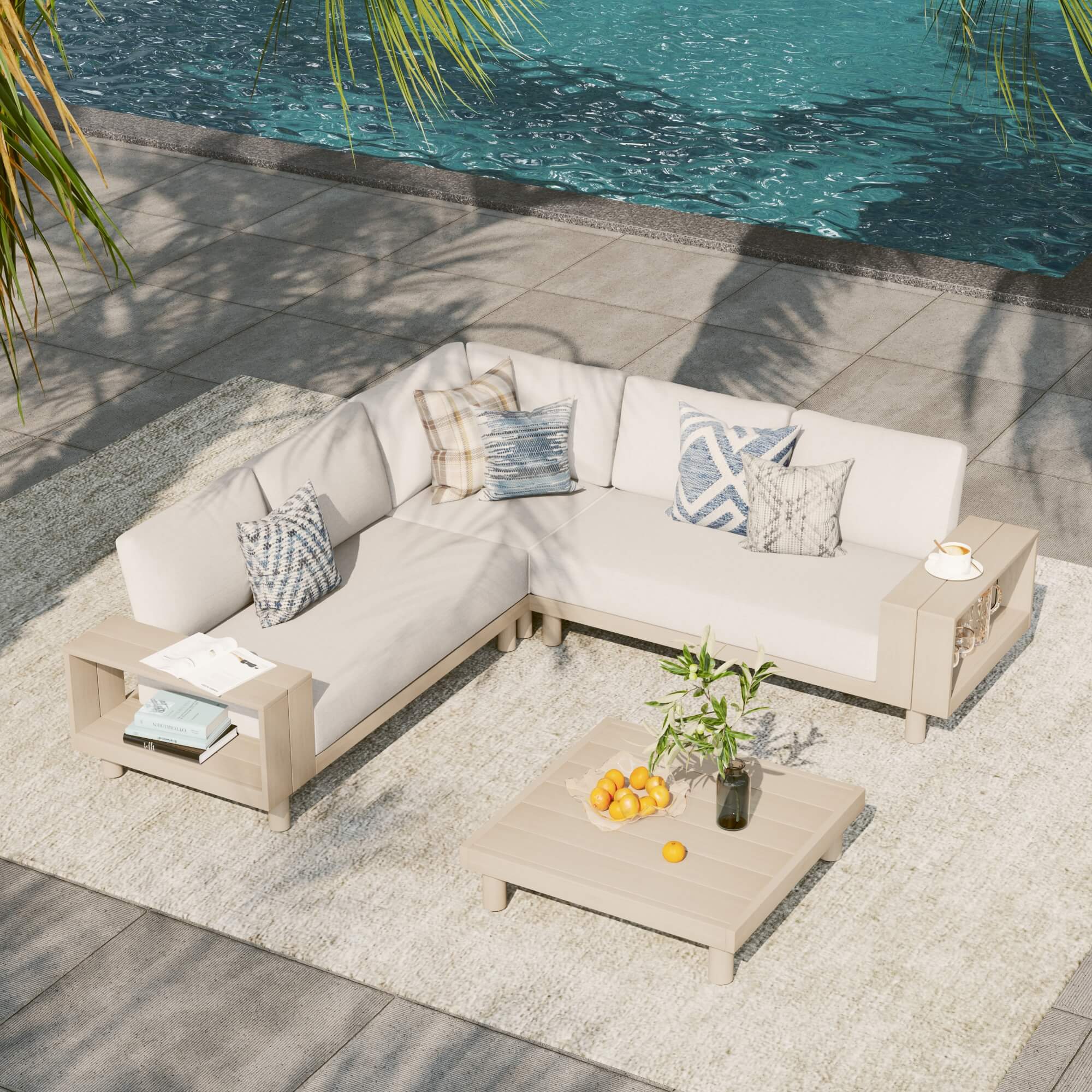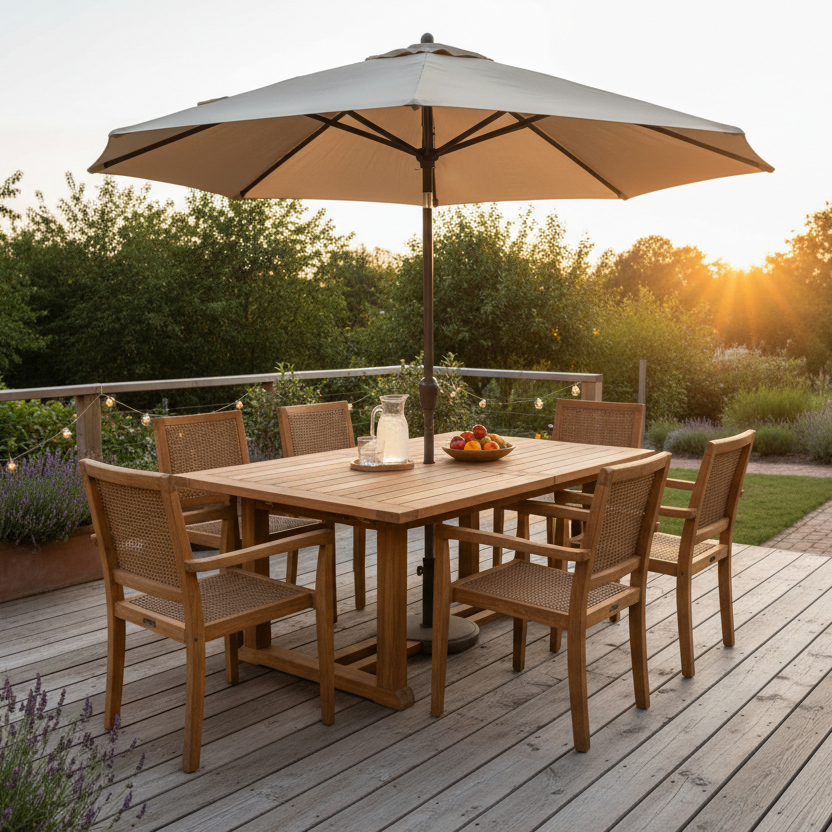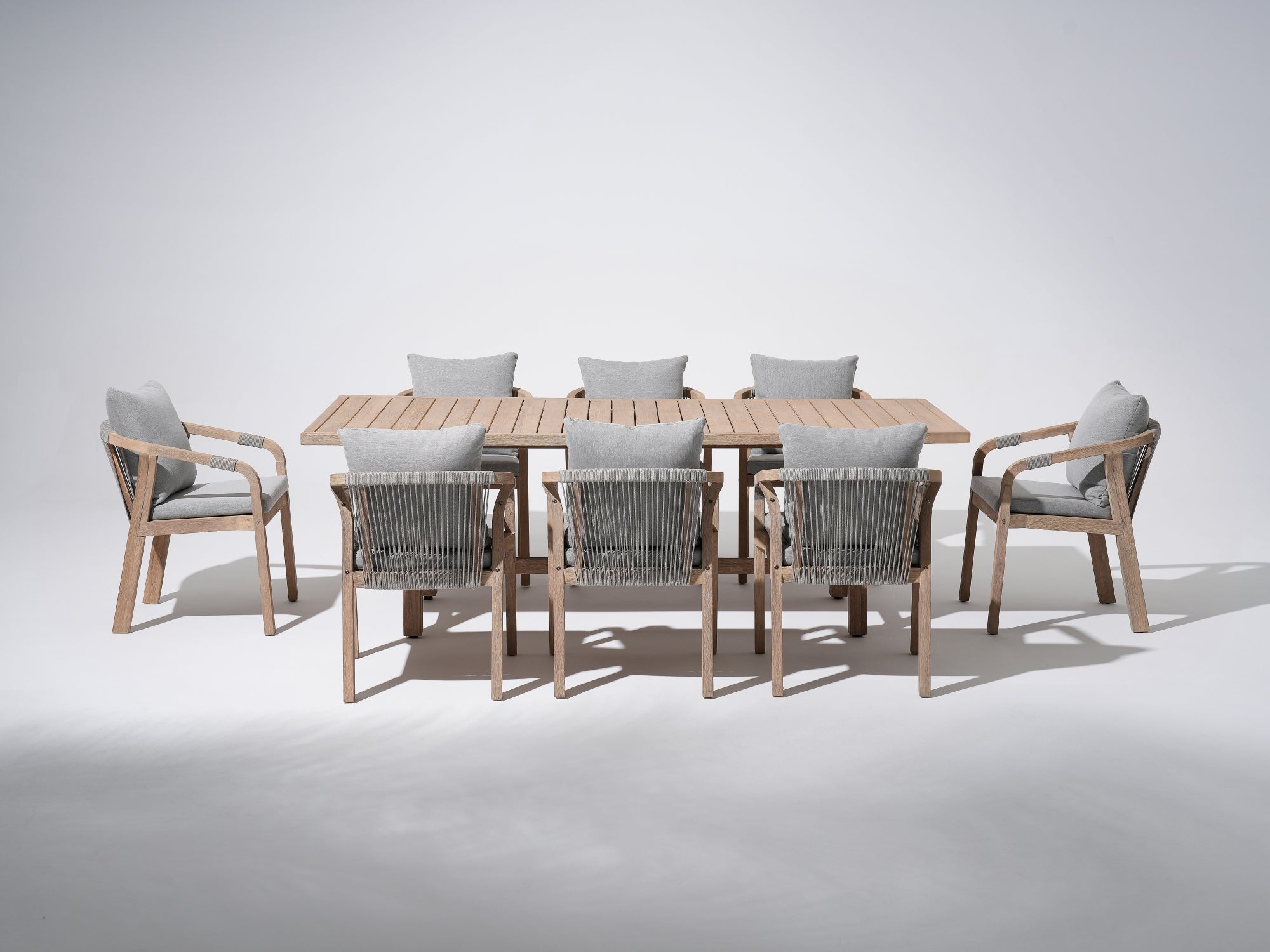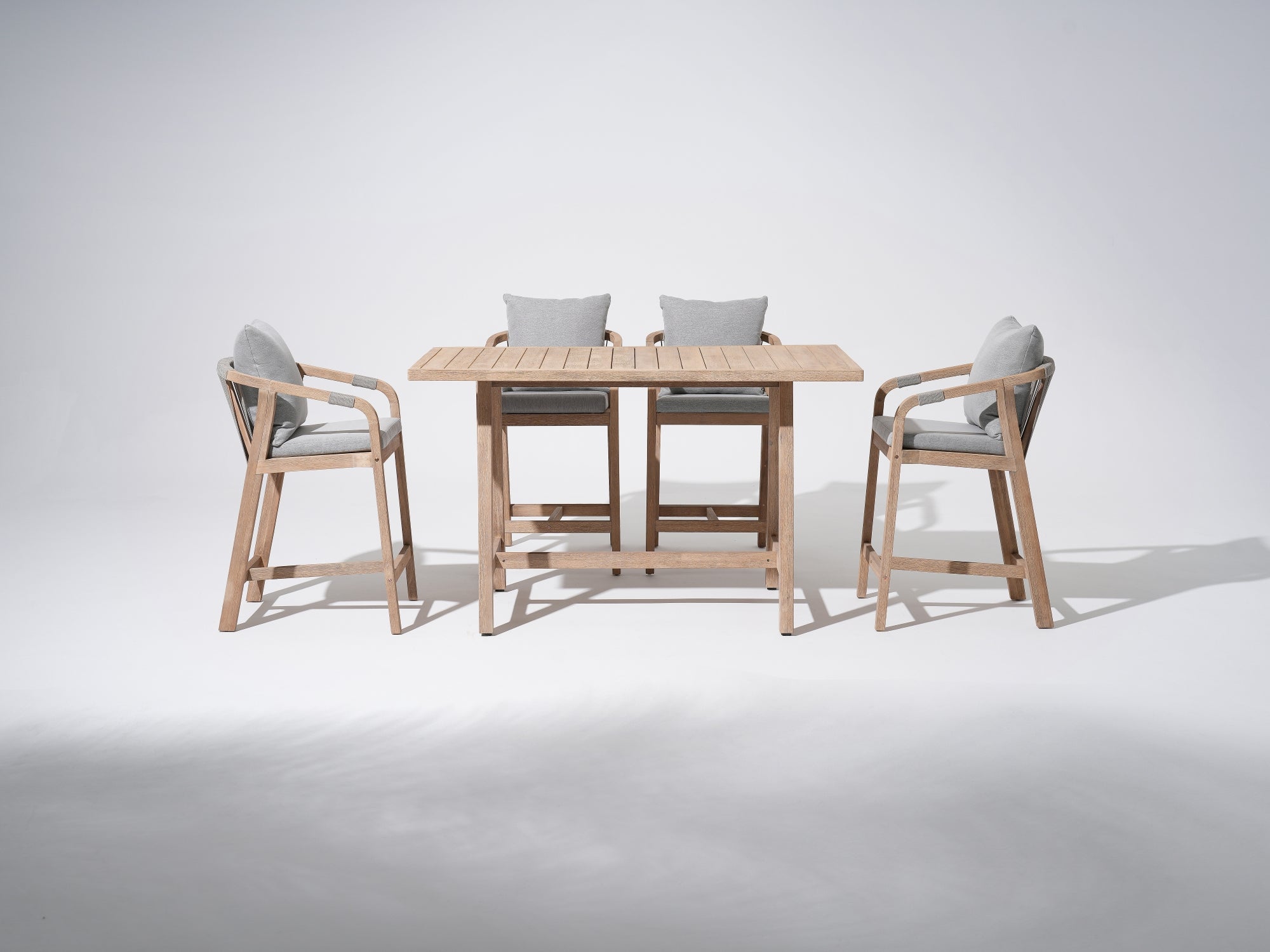If you enjoy outdoor activities in your backyard, having a patio set is undoubtedly a must. However, during scorching summer days or rainy weather, what can you do to ensure your comfort? That's where a Patio Umbrella comes to the rescue. Many patio tables are equipped with an umbrella hole, making it a breeze to attach an umbrella for shade and shelter. If your patio table does not have an umbrella hole, you can opt for offset patio umbrellas. These umbrellas are designed to provide shade and cover a seating area without needing a table with an umbrella hole.
Attaching an umbrella to a patio table with an umbrella hole is a straightforward process. Here's how to go about it:
1. Select the Right Umbrella
Begin by choosing a patio umbrella with a suitable diameter to fit your table's umbrella hole. Measure the umbrella pole's diameter to ensure a proper fit. Jardina dining table with umbrella hole can fit most patio umbrellas on the market, inner diameter 1.8'', external diameter 2.2''. These tables with umbrella hole are available in both square and round configurations and are constructed from robust materials such as tempered glass, aluminum, and weather-resistant wicker, assuring their durability in the face of harsh outdoor elements, promising years of enjoyment.

2. Prepare the Table
Clear the table of any obstructions or debris, so you have easy access to the umbrella hole. If there is a plastic or metal cap covering the hole, remove it.

3. Insert the Umbrella Pole
Insert the bottom end of the umbrella pole into the umbrella hole in the center of the table. Make sure it goes all the way through the hole.
To keep the umbrella stable, you'll need to use an umbrella base. Place the umbrella base around the pole at the bottom. This base is usually weighted to prevent the umbrella from tipping over in the wind. Make sure the base is secure and stable.

4. Open the Umbrella & Adjust the Angle
Depending on the type of umbrella, there may be a crank or a push-button mechanism to open it. Many patio umbrellas have a feature that allows you to tilt and adjust the angle of the canopy to block the sun at different times of the day. Adjust the angle as needed.

5. Test for Stability
Testing for stability is crucial to guarantee the umbrella's secure placement. To ensure the umbrella is steady and doesn't sway or wobble, it's important to perform a few checks. Start by gently nudging the umbrella from different angles to assess its stability. If you notice any wobbling or instability, it's advisable to revisit the base and the locking mechanism. If the umbrella comes with a weighted base, ensure it's adequately filled or positioned to prevent any swaying.

If your patio table doesn't have an umbrella hole, but you want to secure an umbrella in the center of the table, you'll need to drill your own hole. However, it's essential to exercise caution and measure the dimensions accurately to prevent any damage to your dining table.

Or you can also choose a patio umbrella with a base and adjustable direction.

Attaching an umbrella to a patio table is a straightforward task. To enhance your outdoor living experience, it's advisable to opt for a dining table equipped with an umbrella hole, ensuring you're prepared for any occasion. Jardina offers a variety of patio tables with umbrella hole to cater to your needs. Feel free to browse and make your selection:https://jardina.com/collections/outdoor-dining-tables


